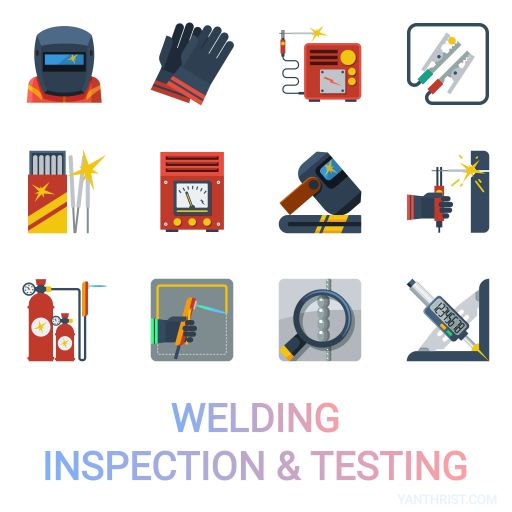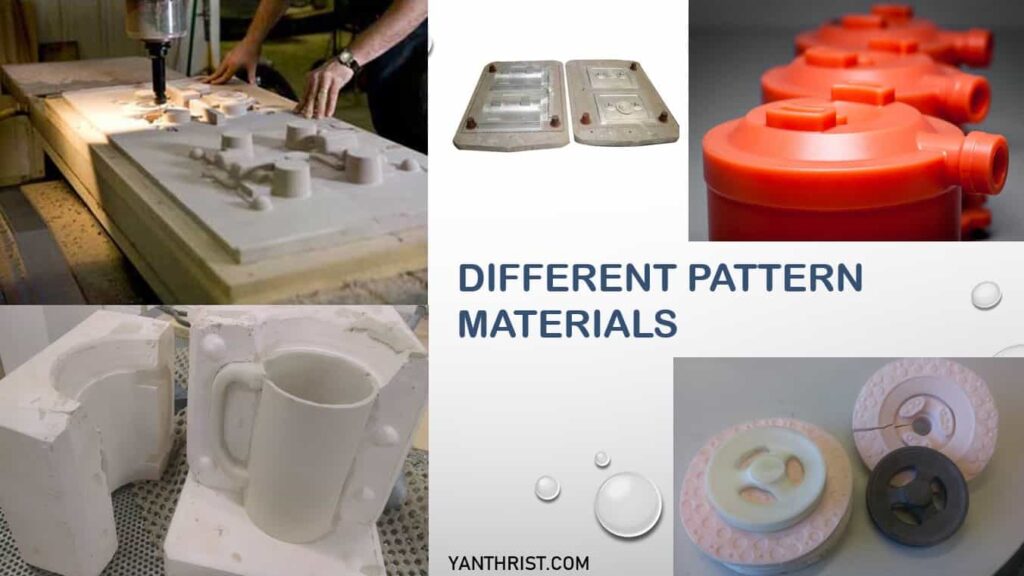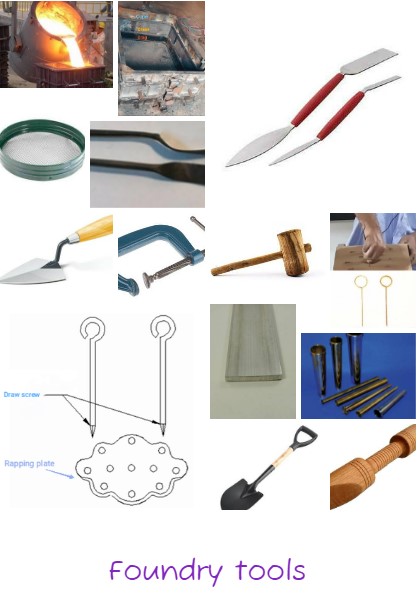ABSTRACT
The Purpose of welding inspection is to locate and determine the type of fault quality of joint and quality of worker skills. Also to ensure high quality of welding and through the careful examinations of the work pieces at each stage of manufacturing.

inspection of Wales is carried out at three stages that is,
WELDING INSPECTION BEFORE WELDING
Following factors have to be insured before starting the welding process,
- The operator must be familiar with the type of work, electrode used and welding machine.
- The material to be welded must have weldable quality.
- Before starting welding clean the job surface properly.
- Edge preparation as per thickness of job piece must be done.
- Standard electrode stick and welding equipment have to choose.
- Set the job pieces with proper Root Gap.
- In D.C welding polarity of Electrode should be maintained.
- Set the current and voltage according to the thickness of plate and size of Electrode.
- Clamp the job pieces properly in jigs and fixtures if necessary.
WELDING INSPECTION DURING WELDING
The following factors have to be keep in mind during welding
- Check the arc length and weld deposit.
- In MULTIRUN welding clean the first deposit of weld before starting fresh run.
- Adjust current according to the need.
- Maintain proper speed of welding and weaving pattern if required.
- Ensure there is no welding defect occurred like Undercut, Overlapping.
- Othe than above also ensure proper angle of electrode, speed of travel, shape of bead, spatter created.
WELDING INSPECTION AFTER COMPLETING WELDING
Inspection of final weld is necessary to ensure quality following things have to be checked,
- After welding clean the welded place with chipping hammer and left it for cooling properly.
- Inspection should be done for defect like cracks, undercut, overlap, lack of smoothness of run, control of distortion and penetration are to be inspected.
- If any rough surface found, improve it by grinding or machining.
TESTING OF WELDS
IMPORTANT OF TESTING OF WELDS
To obtain a reliable joints, it’s necessary to inspect and done adequate testing before and after welding. Depending on welding material, position, condition and services required there are various types of test to be done. Some of them are very quick or instant process and others are done in laboratory.
TYPES OF TESTING- All of testing can be divided in 3 categories i.e
- Non-destructive test,
- Semi- destructive test,
- Destructive test.
Non- Destructive Testing
It’s kind of testing done without changing its property or affecting it’s physical shape or function called Non-destructive testing. Following Types of non-Destructive testing mainly done.

- Visual test,
- Leak or pressure test,
- Stethoscopic test,
- Magnetic particle test,
- Liquid penetrant test,
- Radiography (X-ray) test,
- Ultrasonic test
Destructive Testing
it’s a testing method performed by destroying a part of specimen. Following Types of Destructive testing mainly done.
WORKSHOP TEST-
- Nick brake test,
- Bend test( Free bend or guided bend test)
LABORATORY TEST-
- Tensile test,
- Guided bend test,
- Impact test –CHARPY IMPACT TEST-To find Toughness of a Material
- Hardness test –BRINELL HARDNESS TESTER


